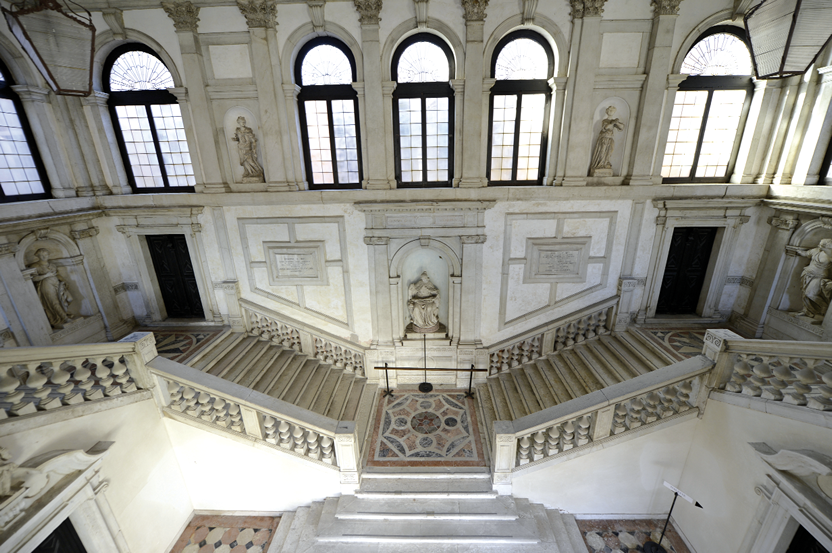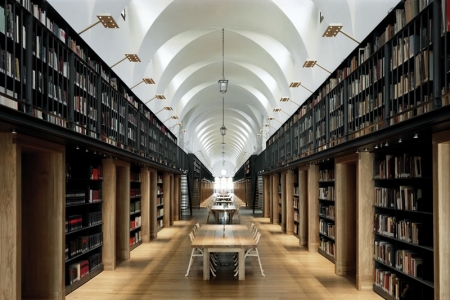FONDAZIONE GIORGIO CINI VENEZIA
Interview to Pasquale Gagliardi, Segretario Generale
by Luca Violo
How can we portray Vittorio Cini the man, patron and collector?
The main trait characterising Vittorio Cini the collector are his wide intellectual and collecting interests. Many of the most precious works hosted in his Foundation are the extraordinary archives acquired by Cini, including Gianfranco Folena’s exciting research into the languages of the sea: 180 points of the Mediterranean with as many linguists who have analysed the idioms of the sea: names of fish, boats, weather, sea, but also the relationship between departure, return and nostalgia. The Foundation hosts an important sound and music archive from the the twentieth century up to the present day – from Ottorino Respighi to Gian Francesco Malipiero, from Alfredo Casella, Nino Rota to Giacomo Manzoni – as well as the largest collection of opera librettos (35,000) (there seems to be a larger one at the Metropolitan) and a collection of various art objects. He was also a patron and generous person, with a unique private life lived between truth and imagination. Thanks to Cini’s excellent relations with critics and art historians, as well as with the directors who have succeeded one another at the head of our prestigious Institute of Art History, such as Giuseppe Fiocco (1955-1972) and Roberto Pallucchini (1972-1989), the Foundation’s library has been enriched by the legacy of their personal archives and their photo libraries. Thus, it has become one of the most important libraries in the world: we keep no less than 1,400,000 files documenting the entire history of Venetian art, including the lost and dispersed works that represent 35% of the archival fund. A precious heritage that cherishes 14 centuries of this civilisation. Today, the Foundation has a fund of ancient books of absolute value, with incredible potential for our researchers.
What is the purpose of the Foundation?
Fondazione Cini was founded in 1951, in memory of Vittorio’s son Giorgio, on the ruins of the former Benedictine monastery of San Giorgio. The aim was the restoration of the architectural complex disfigured by 150 years of military occupation, now transformed into an international centre of cultural activities. Vittorio Cini’s greatest intuition was to entrust the Foundation with the same tasks that had been assigned by the monks to the abbey: these had made the monastery a very important institute of humanistic studies that attracted the greatest intellectuals of the time.
Why did Vittorio Cini choose the Island of San Giorgio as the seat of his Foundation?
From an emotional standpoint, the name of the island reminded him of his son Giorgio. Besides, the architectural state of the former monastery was so degraded that it was an incredible scandal for Venice and the State. Cini obtained the licence to establish his Foundation on the Island of San Giorgio Maggiore from the State Property Office and committed himself to restoring the entire Benedictine complex to make it a cultural, social and educational centre. For 150 years, this place was debased and robbed, passing from one administration to another: French, Austrian and finally Italian. The Library of Baldassarre Longhena became a storehouse of bayonets. The Palladian Last Supper a sawmill, and the beautiful painting of the Wedding at Cana by Paolo Veronese, now in the Musée du Louvre in Paris, was taken by Napoleon. Since 2010, a ‘second original’, a 1:1 scale facsimile obtained thanks to the most sophisticated reproduction techniques developed by the British artist Adam Lowe, founder of the atelier Factum Arte, has ‘returned’ where it belonged after 210 years.
How do you manage the fundraising activities that support Fondazione Cini?
Until his death in 1977, Cini himself bore the Foundation’s expenses. In those years, Vittore Branca’s contribution, former Director-General for Culture for UNESCO, and Bruno Visentini, former Minister of Economy and President of Olivetti, formed an important patrimonial base, and the proceeds derived from Ottorino Respighi’s copyright. In 2002, when I arrived, the rights for the execution of his works amounted to 400 thousand euros per year. With Giovanni Bazoli, president of the Foundation since 2001, we started a fundraising action creating a new role, that of the institutional supporter. He undertakes to pay at least 500 thousand euros and acquires the right to have his own representative on the General Council of the Foundation. All the contributions paid by the supporters cover three of the four million euros, which correspond to the annual cost of conserving, restoring and maintaining the island and its monuments as a whole. The rest comes from the intelligent use of spaces through a targeted logic of co-productions and exhibitions that have always been the flagship of our Foundation. In the future, we have many projects that can only be carried out with a wider and more coordinated economic stability.
The Institute of Art History has always been Fondazione Cini’s flagship. What are its goals?
The Institute of Art History, of which Luca Massimo Barbero has been the director since 2013, was founded in 1954 following a collaboration between the Foundation and the University of Padua. Its library has 150,000 volumes and about 800 titles. The Institute promotes art, in particular Venetian art. It organises conferences and exhibitions that are often characterised by interdisciplinary contamination. It also publish prestigious international journals, such as Arte Veneta (since 1947) and Saggi e Memorie di Storia dell’Arte (since 1957). Since the first director of the Institute, Rodolfo Pallucchini, who was at the same time commissioner of Venice Biennale of Visual Arts, the Fondazione Cini has always been interested in disseminating knowledge of contemporary art. One cannot understand the past and its art without considering the present and vice versa.
How did you shape the Foundation from the beginning of your assignment?
From 2002 to 2014, my mission, in addition to restoring the budget, was to make the Foundation’s sixteenth-century architectural landscape accessible to researchers and the public, redeveloping existing spaces and creating new ones to make it a place open to multidisciplinary culture. In this respect, the Labirinto Borges, inaugurated in 2011 and designed by Randoll Coate in honor of the Argentinian poet, represents my idea of connection between the place of research and the place of performance. It is the best metaphorical image to express this relationship: ora et labora, gardens and studying, pure and applied knowledge, thought and action.











